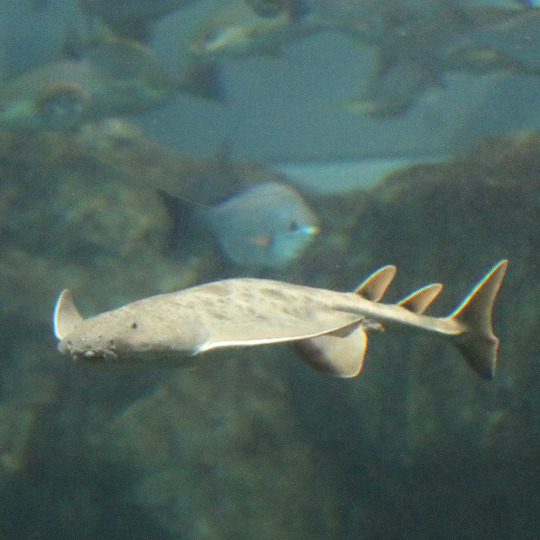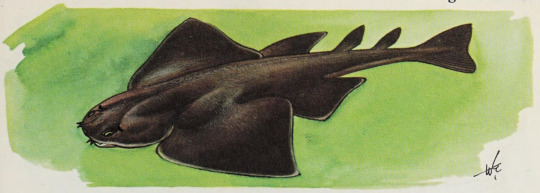#angelshark
Explore tagged Tumblr posts
Note
Give me your favorite shark i like sharks
Favorite shark: Oh that's easy... carpet and angelsharks!

Pacific Angelshark (Squatina californica), family Squatinidae, order Squatiniformes, off the coast of CA, USA
photograph by Andy Murch
287 notes
·
View notes
Note
Ooo, the tickle forest looks so fun! If I’m not too late, I’d like to suggest a possible tickle shark?

There’s some breeds of sharks that are pretty small- perfect for nuzzles and nudges whsnsnnsns
I hope you have a great event friend! Your tickle forest is so cute! 🥰 Have a great day!

I decided to do catsharks cause they're so cute! Enjoy the little fella~
(My art don't repost but please reblog)
#thanks for the ask!#answered asks#my art#my artwork#tickling#tickle art#tickle#tickles#my art stuff#tickle island#tickle forest#angelshark#tickle shark
297 notes
·
View notes
Note
Can Baba Ganoosh have a fish?

He’s asking nicely
Fish for Baba Ganoosh!

You get an Australian Angelshark
Squatina australis
29 notes
·
View notes
Text

Palestine will be free 🍉
Jordan Bream (Acanthobrama lissneri) and Sawback Angelshark (Squatina aculeata)
#palestine#palestine will be free#Palestine 🇵🇸#personal art#reblog friendly#angelshark#bream#sawback angelshark#Jordan bream#sharks#shark#fish
62 notes
·
View notes
Text
Fish of the Day
Today's fish of the day is the Australian angelshark!

The Australian angelshark, known by scientific name Squatina australis, is a common coastal shark in Australia. The range of this shark stretches across the continental shelf of Southern Australia, from Western Australia to New South Wales. Living along the seabed, it survives at depths of 130-255 meters, or 430-840ft. This is where this shark will live on muddy or sandy seabed, which it uses to disguise itself, or seagrass beds, nearby rocky reefs where it will hunt.

As a primarily nocturnal species, the Australian angelshark hunts in the night, searching for prey within rocky zones and reefs. The diet is made up of small fishes, crustaceans, and other invertebrates which it crushes between its sharp teeth. During the day, these sharks spend their time buried beneath the sand, hiding from potential predators, well remaining hidden from nearby prey, which it will lunge at once close enough.

These sharks, like other angel sharks, are ovoviviparous, meaning that the young survive off of the egg casing inside of the uterus of the mother as they gestate, and litters of pups can get up to 20 pups at a time. Other than this, little is known of the breeding habits of the Australian Angelshark, but due to their close relation to the Pacific angel shark, we can estimate they may gestate their pups for around 10 months. From what we know of pacific angel sharks, we can assume a breeding season takes place in May-July, and birthing is done from March-June of the following year. Sexual maturity of the Australian angelshark is achieved at 90cm in length for males, and 97cm in length for females, and they can get as large as 152cm in length total. Although we don't know the lifespan of the Australian angelshark specifically, most angel sharks live lives of 20-25 years, going through around 15 breeding seasons throughout their lifespan.

Have a wonderful day, everyone!
#Squatina australis#australian angelshark#angelshark#shark#sharks#fish#fish of the day#fishblr#fishposting#aquatic biology#marine biology#animal facts#animal#animals#fishes#informative#education#aquatic#aquatic life#nature#ocean#benthic
25 notes
·
View notes
Text



写りは悪いけど普段みられないカスザメをみられて嬉しかった
ダイバーさんが掘り出してくれました
@海響館
The photos are not very good quality, but I am glad to see so many cute moments of angelsharks. They are usually sleeping in the sand. The divers dug them out!
@Kaikyokan
39 notes
·
View notes
Text

Ornate angelshark for World Oceans Day today. Sadly all 23 species of angelsharks are critically endangered due to overfishing and them being very slow breeders which makes it very hard to make up for the lost numbers 😞
Patreon | Etsy
#angelshark#sharks#world ocean day#ocean conservation#sea animals#artists on tumblr#digital art#squishyfauna
15 notes
·
View notes
Text

Day 8: Choose Your Own Shark (Angelshark) 🍵🎂
Ending this sketch jam with a matcha cake shark! Had a lot of fun, thanks for sticking with me and I hope you’ll stay for more!
id: An angelshark drawn to look like it’s made of matcha angel food cake. It is covered in a drippy light green icing and has whipped cream fins. It is decorated with berries along its body, and its tail is a lighter green whipped cream. It swims in a splash of grey-green under the words “Angelshark.” Two hearts dot the bottom right corner. end id
#shark#sharks#angelshark#matcha#green tea#art#artist described#described art#image described#id in alt
93 notes
·
View notes
Text






There is something incredibly fun about using prisma markers and pencils. I loved coloring these.
#my art#sketchbook#traditional art#prisma markers#prismacolor#artists on tumblr#Fallout 4#Fallout#Mermaid#Angelshark#Fairy#Fairies
12 notes
·
View notes
Photo

Sloppy wet salty kiss
#watercolour#sea#gargoyle#undine#octopus#fish#wrasse#shark#angelshark#pipefi#flying fish#coral#art#artblr#sapphic#wlw
34 notes
·
View notes
Text



someszing evil iz brewing muahahaha (mad scientist german accent here)
hi guys im making a super cool closed species you guys should really be super interested and intrigured/j
first image art creds go to thelittle_drekkubus
anywho yeah closed species in the works. keep youer eyes open
#i frogot to add tags the first fukcing time anyway#closed species#wip#current wip#keep your eyes peeled#silly#angelshark#angel shark#inspired#silly ig#art#art wip#species wip#original species#yeah#skull emoji#HELP
4 notes
·
View notes
Text
it’s a colored piece so i’ll be damned and actually put the hashtag even
1 note
·
View note
Text
Australian angelshark facts
The Australian angelshark (Squatina australis) is a species of angelshark, family Squatinidae, found in the subtropical waters of southern Australia from Western Australia to New South Wales between latitudes 18°S and 41°S, at depths down to 255 m (840 ft). Its length is up to 1.52 m (5 ft). Reproduction is ovoviviparous, with up to 20 pups in a litter.
The Australian angelshark has a broad, vertically compressed body and large triangular pectoral fins with free trailing flaps. The snout has fringed barbels beside the nostrils and a pair of spiracles.
Each of these is set at a distance from the eye of about one and a half times the diameter of the eye. There are two small dorsal fins set far back and the tail fin is small. The maximum length is about 152 centimetres (60 in) and this shark has no large eyespots on the body.
Male individuals are fully mature at around 800 millimetres (31 in) total length.
The Australian angelshark is native to the continental shelf of southern Australia being found along the coasts of Western Australia, South Australia, Victoria, Tasmania and New South Wales at depths down to about 130 metres (430 ft). It is usually found on sandy or muddy seabeds and in seagrass meadows, often close to rocky reefs.
The Australian angelshark lies semi-submerged in the sediment on the seabed during the day, eating anything that comes too close. It emerges at night to actively seek out prey.
Its diet consists of small fish, crustaceans and other invertebrates
This shark is ovoviviparous, retaining its developing embryos in its oviduct, with a litter of up to twenty young being born.
Little is known of its breeding habits, but the closely related Pacific angelshark (Squatina californica) has a gestation period of about ten months.
The Australian angelshark is listed by the IUCN in its Red List of Threatened Species as being of "Least Concern". This is because the population size is large and appears to be stable. The fish is used for food, being marketed under the name of "monkfish", but is not easily caught by line-fishing or netting because of its habit of lying immersed in the sediment but can be caught by dragging a trawl across the seabed.
It s not considered dangerous to people, but should not be handled. Its bite can cause serious wounds.

1 note
·
View note
Text

Angelshark (Squatina squatina)
Fishes of the World. Written by Hans Hvass. Illustrated by Wilhelm Eigener. Originally published in 1964.
Internet Archive
212 notes
·
View notes
Text

shark of the day: sawback angelshark, squatina aculeata
------------------------------------------------------------
sawback angelsharks, named for the spiny ridges running down their backs, are often considered the rarest of all angel sharks. they can grow to be around 2 metres(~6.2 ft) long. sawback angel sharks have been found on muddy bottoms throughout the mediterranean and the eastern atlantic near north africa. the feed on primarily bony fish and smaller elasmobranchs.
21 notes
·
View notes